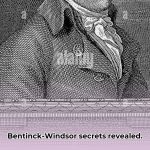Ever wondered what the world is made of? Well, a long time ago, a clever man named Democritus had a crazy idea. He said everything in the whole world is made of these tiny, little pieces that he called atoms. It was like the ultimate building blocks of the universe! This mind-blowing theory changed the way we understand everything, from the air we breathe to the ground we walk on. So, let’s dive into the amazing story of Democritus’ atomic theory and see how it still shakes up the world of science today.
Democritus’ Atomic Theory: Unraveling the Fabric of Reality
In the vast tapestry of human thought, Democritus, an inquisitive Greek philosopher, wove an extraordinary theory that would forever change our understanding of the world. His Democritus-Atomic-Theory proposed that the myriad phenomena we witness are orchestrated by the ceaseless dance of minuscule, indivisible particles known as atoms.
The Essence of the Democritus-Atomic-Theory
Embracing the essence of simplicity, Democritus’ theory outlined the foundational principles of our universe:
- Atomicity: Every object, whether a humble pebble or the celestial bodies that adorn the night sky, is composed of countless atoms.
- Indivisibility: Atoms are immutable, akin to tiny bricks that cannot be further broken down into smaller units.
- Motion: Atoms possess an inherent ability to roam freely within the boundless expanse of space. They are not tethered to a fixed location but embark on ceaseless journeys.
- Interplay: Atoms interact with each other, combining and separating like celestial gears, giving rise to the myriad substances we encounter.
Democritus’ Path to Enlightenment
Democritus’ theory was not borne from mere speculation. He diligently observed the world around him, unraveling its secrets through logical reasoning. His astute observations revealed that matter could be endlessly divided, but he questioned whether this process had a limit. He pondered the curious phenomena of transformation, where one substance transmutes into another, leading him to the notion of atoms as versatile building blocks.
The Legacy of Democritus
Democritus’ Atomic Theory, although initially met with skepticism, became a cornerstone of modern science. His ideas paved the way for groundbreaking discoveries in physics, chemistry, and beyond. Today, we stand upon the shoulders of this ancient sage, marveling at the intricate tapestry woven by atoms, the fundamental constituents of our universe.
Table: Key Points of Democritus’ Atomic Theory
| Principle | Description |
|---|---|
| Atomicity | All matter is composed of atoms. |
| Indivisibility | Atoms cannot be further divided. |
| Motion | Atoms possess the ability to move freely in space. |
| Interplay | Atoms can combine and separate, forming different substances. |
Democritus, the ancient Greek philosopher, was renowned for his pioneering work in the field of atomic theory. What did Democritus truly discover about the nature of the universe? Unravel the secrets of his groundbreaking ideas by clicking here: what did democritus. Prepare to be amazed as you delve into the profound insights of this brilliant mind. Join us on this captivating journey through time and explore the remarkable contributions of Democritus to our understanding of the cosmos. Endless discoveries await you just a click away!
How did Democritus contribute to the development of the atomic theory?
Picture this: around 450 B.C., a brilliant thinker named Democritus had a mind-blowing idea. He believed that everything in the universe, from the tiniest grain of sand to the gigantic stars, was made up of tiny, indivisible particles he called atoms.
Imagine being in Democritus’s shoes, living in a world where people thought matter could be divided endlessly like a never-ending roll of fabric. Democritus took a brave leap and challenged this long-held belief. He envisioned atoms as solid, unbreakable building blocks that dance and interact constantly.
Here’s a closer look at Democritus’ groundbreaking contributions:
- Atoms are the building blocks: Democritus proposed that all matter consists of atoms, the smallest units that can’t be further divided. It was like discovering the fundamental LEGO bricks of the universe!
- Atoms are in perpetual motion: Democritus imagined atoms as tiny balls bouncing around like popcorn popping in a pan. Their constant motion and collisions explained why different substances behave differently.
- Atoms create variety: Democritus believed that the size, shape, and arrangement of atoms determined the unique properties of different materials. It’s like how different puzzle pieces create different pictures.
- Atoms are the key to understanding the world: Democritus’ atomic theory provided a new lens through which to view the world. By understanding the behavior of atoms, scientists could make sense of the diverse phenomena around them.
Democritus’ legacy:
Democritus’ atomic theory was a major milestone in the development of science. It laid the foundation for modern chemistry and physics, providing a framework for understanding the structure and properties of matter.
Remember this:
- Democritus proposed that all matter is composed of indivisible atoms.
- He believed atoms were in constant motion and that their interactions determined substance properties.
- Democritus’ atomic theory was a game-changer in scientific thought.
What are the key principles of Democritus atomic theory?
Let’s take a deeper dive into the fundamentals of Democritus’ atomic theory, which transformed the understanding of matter and shaped the path of science for centuries.
The Building Blocks of Everything: Imagine everything you see, touch, and think about as giant Lego sets. The smallest pieces in this set are called atoms. They are the basic bricks that make up every material, from the chair you’re sitting on to the stars twinkling in the night sky.
Unbreakable and Timeless: Atoms are like unbreakable gems. They can’t be split into tinier bits, like water being poured into two cups. They endure the test of time, remaining unchanged and indestructible.
Always on the Go: Picture a bustling city where tiny atoms zip around like cars. They collide and bounce off each other, creating an endless dance of interactions. This constant motion is the lifeblood of the atomic world.
Shape and Size Matter: Just like different shapes of Lego bricks create different structures, the variations in atomic size and shape determine the properties of the materials they form. For instance, gold’s distinctive yellow hue and density stem from its tightly packed atoms.
The Empty Canvas: Between the atoms lies a vast emptiness, like an invisible ocean. This void is essential for the atoms to maneuver and engage in their lively interactions.
Key Takeaways:
- Atoms are the tiny, unbreakable building blocks of the universe.
- They’re always in motion, dancing and interacting with each other.
- The shape, size, and arrangement of atoms define the specific characteristics of each substance.
- The void allows atoms to coexist harmoniously and facilitate their dynamic interactions.
Understanding these principles laid the groundwork for comprehending the world around us and the nature of matter itself. Democritus’ legacy as the father of atomic theory continues to inspire and illuminate the path of scientific exploration.
What is the significance of Democritus’ atomic theory today?
You know when you break an object down into smaller and smaller pieces, like a puzzle? Well, Democritus, a clever Greek philosopher from way back around 400 BC, had this wild idea that if you kept breaking things down, you’d eventually reach a point where you couldn’t break them any further. These tiniest, unbreakable pieces, he called them “atoms.”
Now, Democritus didn’t have fancy microscopes or scientific tools, but his theory was spot on! It was like a light bulb moment that lit up our understanding of the world. His atomic theory gave us the idea that everything around us, from trees to water to even the air we breathe, is made up of these tiny, tiny building blocks called atoms.
Why is that so cool? Well, it’s like the secret recipe behind why things are the way they are. Different atoms can combine in different ways, like puzzle pieces, to create all the different substances we see around us. It’s like the alphabet of our universe!
So, here are a few things Democritus’ theory nailed:
- Atoms are like tiny jigsaw pieces that can’t be split into smaller pieces.
- They’re around forever, like little time travelers.
- Atoms of the same stuff are like identical twins, while atoms of different stuff are like cousins.
- They’re always on the move, like little kids at a playground.
This brilliant idea of Democritus’ has been the foundation for science ever since. It’s like the starting point for understanding everything from how chemicals react to how the stars shine. It’s a testament to the power of human thinking and how even ancient ideas can still shape our world today.
FAQ
Q1: What are the main principles of Democritus’ atomic theory?
A1: According to Democritus’ theory, all matter is composed of indivisible, indestructible atoms that vary in shape and size, and move in empty space, combining or separating to form different substances.
Q2: How did Democritus arrive at his atomic theory?
A2: Democritus’ atomic theory was based on reasoning and observation rather than scientific experimentation. He observed that matter could be divided into smaller and smaller parts, but he believed that there must be a limit to this divisibility, and this limit is the atom.
Q3: What is the significance of Democritus’ atomic theory?
A3: Democritus’ atomic theory was a major breakthrough in ancient Greek science. It provided a rational explanation for the nature of matter and laid the foundation for modern atomic theory.
Q4: How has Democritus’ atomic theory been modified over time?
A4: While the basic principles of Democritus’ atomic theory remain intact, modern atomic theory has been modified to include a more detailed understanding of atomic structure, including the existence of protons, neutrons, and electrons.
Q5: What are some of the limitations of Democritus’ atomic theory?
A5: Democritus’ atomic theory did not account for the existence of subatomic particles such as protons, neutrons, and electrons, nor did it explain the chemical behavior of atoms.















